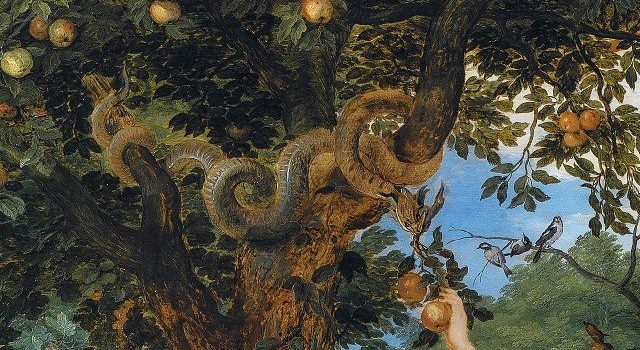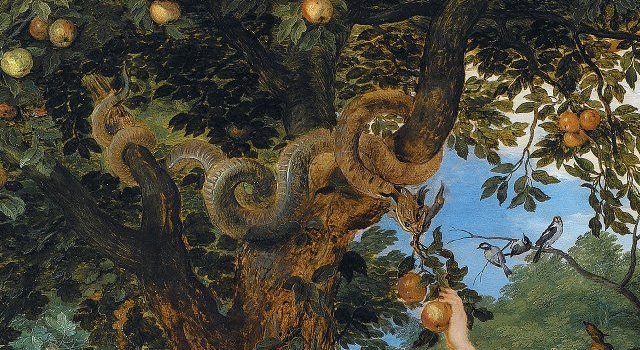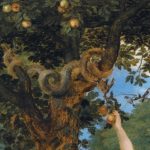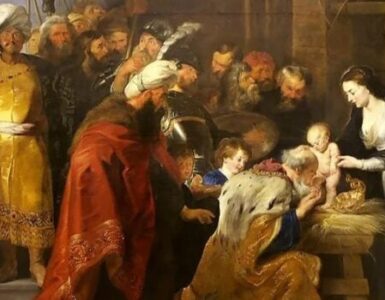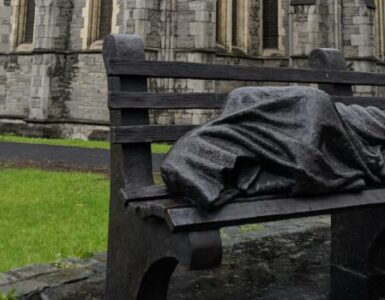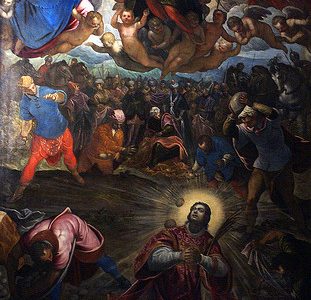When trying to make sense of a crisis, it is helpful to return to the starting point of those involved. In the case of humanity, that means examining the events in the Garden of Eden as recorded in scripture. God provided Adam and Eve with everything necessary to thrive, grow, and prosper. Nevertheless, with coaxing from God’s adversary, the couple refused to be satisfied with God’s gift and sought and illicitly obtained the knowledge of the fruit of the one tree denied them. For their transgression they were expelled from the Garden, but ever since then humanity, refusing to learn its lesson, has frequently lusted after forbidden knowledge. Since the advent of Christ, the Church has declared what is necessary for salvation and called it the deposit of faith. Although some dogmas have been refined over the centuries (such as papal infallibility, the Immaculate Conception, and the Blessed Virgin Mary’s Assumption, for example), nothing has been revealed by God after the close of the apostolic age that is required for Catholics to believe de fide.
The quest for forbidden knowledge began even in the first century with the Gnostics and continues in our day with permutations of the so-called New Age movement. An important link in that chain of errors is Theosophy, a set of esoteric beliefs formulated by the Russian Madame Helena Pavlovna Blavatsky (HPB, as she was known to many) in the 1800s. Blavatsky’s doctrines were derived from her “secret doctrine” and contributed to the growth and spread of secret spiritual teachings, occult beliefs, versions of yoga, and especially anthroposophy (a variation of theosophy with more Western influences), which also spreads its influence today through the Waldorf Schools. From a little-noticed beginning, HPB and her followers have made a noticeable impact on our culture and spiritual practices.
Russia in the nineteenth century was abuzz with a mix of ideas: Slavophilism, articulated by Alexis Khomiakov and others, including Dostoevsky; a renewal of Orthodox religious life and the peak of spiritual eldership, though religious life in the hinterlands could still be desperately poor and stunted; nihilism and a host of other establishment-hating political ideologies, devastatingly depicted in Dostoevsky’s Demons. Added to that mix was a slew of folkloric, superstitious, and occult beliefs. From that boiling cauldron came Madame Blavatsky. Born in 1831 into privilege in czarist Russia, she later engaged in some mystery-shrouded travels. At some point (probably in the early 1850s) she met a mysterious guru, Master Morya or Mahatma M., who she claimed to have previously met “in the astral.” From teachings said to be from Tibet and India, plus esoteric writings and purported visions and knowledge of a “secret doctrine” (the title of her most well-known book), Blavatsky crafted what she called “theosophy,” meaning Divine Wisdom. There were also references to Isis and Pythagoras and connections to clairvoyance and a belief in reincarnation.
Her decisive journey was a trip to the United States in 1873, and a meeting with her future collaborator, Colonel Henry Steele Olcott, in 1874 while both were pursuing an interest in spiritualism (contacting the dead). Their partnership laid the foundations for the Theosophical Society. HPB supplied her acolytes with tales of unknown realms of spirit and thought and travels to lost past lands. She believed she had a destiny, described here by a twentieth century follower and editor of her works: “The task laid on her was tremendous, to challenge on one hand the entrenched beliefs and dogmas of established Christianity, and on the other the equally dogmatic views of the science of her day” (Preston and Humphreys, xiv). There were even efforts to claim major portions of Christian teaching as corrupted versions of ancient teaching and belief that Gnosticism had permeated Christian doctrine, including that on the Immaculate Conception (Preston and Humphreys, xxxi).
In 1878 she and Olcott went to India where theosophy acquired more connections to Hindu and Tibetan teaching, to the extent that HPB claimed theosophy was a form of Buddhism. In 1885 she returned to Europe, but not before weathering accusations of fraud and deception made by a former associate. In 1887 she founded a magazine, Lucifer, “to bring to light the hidden things of darkness” (Preston and Humphreys, xvii). She died in England in 1891. According to a twentieth century devotee, Helen Zahara, HPB’s lasting legacy is from The Secret Doctrine, which “offers the student…that which leads to a deeper understanding of the mystery of man’s nature, his occult history, his hidden sources, his place on the evolutionary ladder, his relationship to the universe and all that it contains, his present situation, and his future possibilities” (Commentaries, 35). One interesting side note is the extent to which theosophy influenced the Irish Literary Revival of the nineteenth and early twentieth centuries (Small, Commentaries, 108-123).
The Catholic Church in the 1913 Catholic Encyclopedia took notice of theosophy, describing it in part thus: “ By intuition or illumination the initiated Theosophists are considered to be in harmony with the central principle of the universe. This knowledge of the secret forces of nature of the true relation between the world and man frees them from the ordinary limitations of human life, and gives them a peculiar power over the hidden forces of the macrocosm. Their exceptional faculties are alleged as experimental proof of their superior science: they are the only guarantee of the truth of their teaching. They are said to transmit this truth by way of revelation. Thus theosophy appeals to tradition but not in the Christian sense.” This heady mix of teaching opposed to tradition made a mark on Western culture to be sure, but it also served as a seedbed for other belief systems that seduced many.
The Catholic response to Theosophy, and indeed the entire modern New Age movement, is well-summed up in a 2003 document by the Pontifical Councils on Culture and Interreligious Dialogue, Jesus Christ, The Bearer Of the Water Of Life: A Christian Reflection on the “New Age.” That document (hereafter JCBWL) recognizes Theosophy as foundational to the New Age impetus: “Nineteenth century esotericism is seen by some as completely secularised. Alchemy, magic, astrology and other elements of traditional esotericism had been thoroughly integrated with aspects of modern culture, including the search for causal laws, evolutionism, psychology and the study of religions. It reached its clearest form in the ideas of Helena Blavatsky, a Russian medium who founded the Theosophical Society with Henry Olcott in New York in 1875. The Society aimed to fuse elements of Eastern and Western traditions in an evolutionary type of spiritualism. It had three main aims: 1. To form a nucleus of the Universal Brotherhood of Humanity, without distinction of race, creed, caste or colour; 2. To encourage the study of comparative religion, philosophy and science; 3. To investigate unexplained laws of Nature and the powers latent in man” (JCBWL, 2.3.2). Another important facet of Blavatsky’s teaching “was the emancipation of women, which involved an attack on the ‘male’ God of Judaism, of Christianity and of Islam. She urged people to return to the mother-goddess of Hinduism and to the practice of feminine virtues. This continued under the guidance of Annie Besant, who was in the vanguard of the feminist movement. Wicca and ‘women’s spirituality’ carry on this struggle against ‘patriarchal’ Christianity today” (JCBWL, 2.3.2). That feminist emphasis will play a part in the growth of yoga.
Yoga rose to prominence in the second half of the twentieth century, but its ascent was preceded by the emergence of theosophy’s most notable offspring, anthroposophy. According to the Anthroposophical Society in America website, Anthroposophy means “the art and science of becoming more fully human.” This bland definition is deceptive, because it glosses over a multitude of non-traditional ways of thinking as part of the great Gnostic project. Philosopher Eric Voegelin insists that all forms of Gnosticism share a central theme: “the experience of the world as an alien place into which man has strayed and from which he must find his way back home to the other world of his origin” (7). Despite a superficial similarity to the Catholic life as a path to life with God in heaven, “Gnostic man must carry on the work of salvation himself,” writes Voegelin (8). That accounts for the strong element of self-help thinking in Anthroposophy.
The founder of Anthroposophy was Rudolf Steiner (1861-1925), who split from Theosophy in 1913 to form his own organization. According to writer and biographer Michelle Goldberg, “unlike most prominent Theosophists, Steiner rooted his spirituality in the esoteric Christian tradition, not Eastern religion. (He did, however, incorporate ideas of karma and rebirth)” (176). The very name of Steiner’s brainchild, Anthroposophy, shows a more human-centered orientation than HPB’s esoteric society. Goldberg continues, “He elaborated a metaphysical doctrine in which humankind is menaced by two sinister forces—Lucifer, the spirit of pride, and Ahriman, the spirit of materialism” (176). By all accounts Steiner was a polymath and wide-ranging thinker whose talents included architecture and literary criticism. In addition to the nexus of New Age thought, his influence continues to be felt in biodynamic agriculture, alternative medicine, and education.
The father of Anthroposophy thought about medicine as a homeopathic endeavor whereas what we typically think of as mainstream medicine is known as “allopathic.” According to Goldberg, “Steiner believed that illness stems from imbalances in the body, but in his view, the body can’t be limited to material processes” (176). In the section on yoga below we will touch on one of Steiner’s medical acolytes, whom he encouraged to get “conventional medical degrees” as well as studying his methods (177). It can be difficult to discern what alternative medical practices are compatible with solid Catholic faith, but there are trustworthy guides.
Steiner’s educational thinking is manifested most fully in today’s Waldorf Schools. According to the official Waldorf site, “[Steiner wrote that] Waldorf education is not a pedagogical system but an art—the art of awakening what is actually there within the human being.” Or, as Goldberg states: “Waldorf schools, with their emphasis on nurturing the creativity and uniqueness of every student, have been very influential in the world of progressive private education” (176). For parents eager—even desperate—to raise and nurture their children despite a violent, mass-culture society, Waldorf can seem to be a positive alternative. In that regard Waldorf might seem akin to Montessori education; however, unlike Steiner and his adherents, Maria Montessori was rooted in the Catholic Faith. Her views treated children within a realistic framework of human development, not as beings awaiting the blooming of a cosmic consciousness.
Aficionados of the famous Inklings group may have heard of Anthroposophy via the writer Owen Barfield (1898-1997). The group biography of the Inklings by Carol and Philip Zaleski, The Fellowship, covers Barfield’s affiliation with Anthroposophy and how it manifested itself in his life. Barfield was simultaneously poet, critic, writer, lawyer, and philosopher. Not as well-known as Lewis and Tolkien, Barfield nevertheless gained a reputation as a writer of stature. Barfield heard Steiner lecture in the early 1920s and quickly became a convinced member of Anthroposophy. By that time he was also friends with C.S. Lewis, and the two debated Barfield’s beliefs and many other subjects for the rest of Lewis’s life. Lewis never had much use for Anthroposophy, or any of its esoteric ilk, especially after his conversion and as his Christian faith deepened. Anthroposophy informed much of Barfield’s studies in philology and his other writing. In 1949 he was baptized and received into the Church of England, but (as the Zaleskis remind us) he saw no contradiction in staying involved with Anthroposophy: “[H]is spiritual home remained Anthroposophy, which entailed beliefs—reincarnation, akashic realms, the evolution of consciousness, and the rest—that have never found a home in Christian orthodoxy” (378). This simultaneous holding of clashing views can be understood by considering the views of Steiner. According to the Zaleskis, “Steiner rewrote the history of the world, describing lost ages and unknown civilizations….He filled in this historical framework with teachings about reincarnation, karma, the astral planes, the Akashic Record, and other familiar elements in the European occultist’s kit. A new version of Christianity emerged, in which Christ becomes the pivot of cosmic and human evolution” (108-109, emphasis added). That last sentence rings alarm bells for anyone familiar with the problematic writings of Father Pierre Teilhard de Chardin on evolution, or Fathers Richard Rohr and Matthew Fox on the so-called “Cosmic Christ.”
Whatever may be the influence of Anthroposophy on heterodox Christianity, it is inarguable that it played a significant role in opening the door to the dissemination of yoga in the West, especially the U.S. This story features yet another Russian woman, Eugenia Peterson, born into an aristocratic milieu in 1899. Her story spans three centuries, as she lived to the age of one hundred and two. For many decades she had been known as Indra Devi, and she befriended many influential Americans in Hollywood and associated circles. She also was acquainted with Eastern personalities such as Gandhi, Nehru, and Krishnamurti. How did she transform from Russian Eugenia to India-connected Indra? “To understand how Eugenia became Indra Devi, it’s necessary to understand the bridge Theosophy created between Eastern and Western spirituality,” writes Goldberg (58). Her circumstances eventually directed her to the U.S. Forced to flee Russia with the fall of the Tsar and ascent of the Bolsheviks, her travels took her to China and India, where she learned and began to practice and teach yoga before moving to America.
Here in the U.S. in the early 1950s she met Jacob Knauer, like her a refugee from totalitarianism (the Nazis in his case), an Anthroposophic physician “known for his spiritualism and for alternative cancer treatments” (Goldberg, 175). He “made use of acupuncture and Russian folk medicine—and, later, yoga. Often, he used a pendulum to make diagnoses” (177). After their marriage in 1953, “Devi and Knauer formed an alternative-medicine power couple. While Devi instructed movie stars, Knauer became the private physician to the celebrated composer Igor Stravinsky, a close friend of Aldous Huxley” (179). Devi tapped into the growing awareness of stress in American society, and yoga seemed to offer relief without resort to prescription drugs. The explosion of yoga is a broader story than can be covered here, but there are two more points to make. First, yoga especially influences women. “Today in the West, yoga is an overwhelmingly female pursuit—the [2012] Yoga Journal survey found that 82.2 percent of practitioners are women” (272). Second, yoga has long been controversial in Christian circles. There has been no official top-level pronouncement on yoga, but many church leaders—including Pope Francis—agree that the spiritual practices of yoga are to be avoided. And not to be dismissed are Indian Catholics who, having been exposed to yoga on a regular basis, warn about its dangers.
To wrap up this exploration of Theosophy and its associated teachings, one can ponder the fact of their Russian origins. Might we consider Theosophy as one of the errors of Russia mentioned in the Fatima message? As we mentioned in the beginning, Gnostic and Gnostic-like beliefs rest on personal interpretations, secret knowledge, and mystical and/or occult experiences. Contrast that with the Catholic Magisterium, which is founded on revelation from Almighty God. As apologist Matthew Plese, writing in Catholic Family News, puts it: “The notion of revelation is diametrically opposed to anthroposophy, esotericism, monism, neopaganism, pantheism, and transcendentalism.” So, instead of placing our hopes in the promises of a guru and an unknown doctrine, we can put our faith in the teaching of Jesus Christ through His Church.
✠
Sources:
Anthroposophical Society in America: https://anthroposophy.org/
Association of Waldorf Schools of North America: https://www.waldorfeducation.org/waldorf-education
Barborka, Geoffrey A. H.P. Blavatsky, Tibet and Tulku Adyar, Madras India: The Theosophical Publishing House, 1974.
Blavatsky, H.P. An Abridgement of the Secret Doctrine (Elizabeth Preston and Christmas Humphreys, eds.) London: The Theosophical Publishing House, 1968.
Goldberg, Michelle. The Goddess Pose: The Audacious Life of Indra Devi, the Woman Who Helped Bring Yoga to the West New York: Alfred A. Knopf, 2015.
Hanson, Virginia (ed.) H.P. Blavatsky and the Secret Doctrine: Commentaries on Her Contributions to World Thought Wheaton, IL: Theosophical Publishing House, 1971.
New Advent (Catholic Encyclopedia): https://www.newadvent.org/cathen/14626a.htm
Plese, Matthew. “Msgr. Fenton’s Handbook of Catholic Apologetics: The Possibility of Revelation” Catholic Family News, October 2022.
Pontifical Council for Culture/Pontifical Council for Interreligious Dialogue: https://www.vatican.va/roman_curia/pontifical_councils/interelg/documents/rc_pc_interelg_doc_20030203_new-age_en.html
The Theosophical Society in America: https://www.theosophical.org/about/theosophy
Voegelin, Eric. Science, Politics and Gnosticism. (Washington, D.C.: Regnery, 1997).
Zaleski, Carol and Philip. The Fellowship. The Literary Lives of the Inklings: J.R.R. Tolkien, C.S. Lewis, Owen Barfield, Charles Williams. New York: Farrar, Straus and Giroux, 2015.
Image: Detail, Jan Brueghel the Elder and Peter Paul Rubens, The Fall of Man, c. 1615


